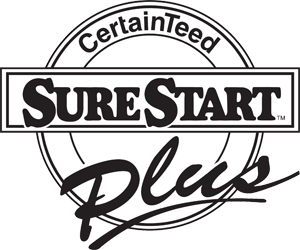How to Clean TPO Roof: Maintenance and Cleaning Tips
When it comes to roofing materials, property owners often seek guidance on how to clean TPO (Thermoplastic Olefin). This material has emerged as a popular and reliable option for residential and commercial buildings alike due to its cost-effectiveness, durability, and energy efficiency.

Understanding TPO Roofing
Defining TPO Roofing: A Durable Solution
TPO, or Thermoplastic Olefin, roofing is a modern and highly efficient roofing material that has gained widespread popularity in recent years. TPO roofs are known for their durability, versatility, and cost-effectiveness. They are composed of a single-ply membrane made from a blend of rubber and plastic materials, offering a strong yet flexible roofing solution.
Advantages of TPO Roofing
One of the key reasons behind the popularity of TPO roofing is its numerous advantages. TPO roofs are reflective, helping to reduce energy consumption by reflecting sunlight and heat away from the building. This reflective property not only makes them energy-efficient but also contributes to a more comfortable indoor environment. Additionally, TPO roofing is resistant to UV rays and chemical exposure, ensuring long-lasting performance.
Understanding TPO Roofing Lifespan and Maintenance Needs
While TPO roofing offers remarkable durability, it is not immune to the accumulation of dirt, debris, and environmental contaminants. Over time, these elements can take a toll on the appearance and functionality of your TPO roof. TPO roofing typically has a lifespan of 15 to 30 years, depending on factors such as climate, maintenance, and quality of installation.
TPO roofs are particularly susceptible to dirt and debris due to their reflective surface, which can make even minor stains and discoloration noticeable. Regular cleaning and maintenance are essential to preserving the roof’s aesthetic appeal and performance.

Preparing for TPO Roof Cleaning
Safety First: The Importance of Protective Gear
Before you embark on the journey to clean your TPO roof, it’s crucial to prioritize safety. Safety gear, including non-slip shoes, gloves, and safety goggles, should be your first consideration. TPO roofs can be slippery, especially when wet, and accidents can easily be prevented with the right attire.
Tools of the Trade: What You’ll Need
To ensure an effective TPO roof cleaning process, it’s essential to have the right tools and equipment at your disposal. A soft-bristle brush or a mop with a long handle is ideal for scrubbing away dirt and grime without causing damage to the TPO membrane. Additionally, a garden hose with a spray nozzle attachment will help you control the flow of water for rinsing.
Inspect Before You Act: Roof Inspection
Before you begin cleaning, take a few moments to inspect your TPO roof carefully. Look for any signs of damage, including punctures, tears, or loose seams. Identifying these issues before cleaning can prevent further damage and help you plan for necessary repairs.

Cleaning TPO Roof Step by Step
The Gentle Approach: Starting Right
When it comes to cleaning your TPO roof, it’s crucial to begin with a gentle method. Harsh cleaning techniques can damage the TPO membrane, compromising its integrity and lifespan. Instead, opt for a soft and patient approach to maintain your roof’s quality.
Mild Detergents and Specialized TPO Roof Cleaners
To effectively remove dirt, stains, and debris from your TPO roof, consider using mild detergents or specialized TPO roof cleaners. These products are designed to break down and remove contaminants without causing harm to the roofing material. When using detergents, always follow the manufacturer’s instructions for the best results.
A Soft Touch: Scrubbing with Care
As you clean your TPO roof, use a soft-bristle brush or a mop with a gentle touch. The goal is to dislodge and lift away the accumulated grime without scratching or damaging the TPO membrane. Begin at one end of the roof and work your way methodically, taking your time to ensure thorough cleaning.
Avoiding Harsh Chemicals
While it might be tempting to use strong chemicals to tackle tough stains, it’s important to avoid them when cleaning your TPO roof. Harsh chemicals can cause irreparable damage to the TPO material, leading to costly repairs or replacements. Stick to mild detergents and TPO-specific cleaners for safe and effective results.

Dealing with Stubborn Stains and Mold
Common Challenges: Mold, Algae, and Stubborn Stains
TPO roofs, like any outdoor surface, are susceptible to common issues such as m, and stubborn stains. These not only affect the appearance but can also compromise the roof’s performance. Let’s explore how to tackle these challenges effectively.
Eco-Friendly Solutions: Mold and Algae Removal
When faced with mold and algae on your TPO roof, it’s essential to opt for eco-friendly solutions. Harsh chemicals can harm the environment and, in some cases, the roofing material itself. Consider using a mixture of water and mild soap or a vinegar-water solution to gently remove mold and algae. Be sure to scrub gently to avoid damaging the TPO membrane.
Avoid Abrasive Materials: Protecting Your Roof
In the quest to eliminate stubborn stains, it’s important to avoid abrasive materials like wire brushes or abrasive pads. These can scratch and weaken the TPO membrane, leading to potential leaks or damage. Instead, stick to soft-bristle brushes, mops, or non-abrasive cleaning tools to protect your roof while effectively removing stains.

Rinsing and Drying
Thorough Rinsing: A Critical Step
After the cleaning process, the next crucial step is to ensure thorough rinsing of your TPO roof with clean water. This step is essential to remove any remaining cleaning solution, dirt, and debris. Rinsing will leave your roof looking pristine and ready to face the elements.
Proper Drainage: Preventing Water Pooling
As you rinse your TPO roof, pay close attention to proper drainage. Ensure that water flows smoothly off the roof, preventing any pooling. Pooling water can lead to water damage and even compromise the structural integrity of your roof over time.
Natural Air Drying: Let It Breathe
Once you’ve completed the rinsing process, allow your TPO roof to air dry naturally. Avoid using any external heat sources or fans, as excessive heat can damage the TPO membrane. Natural air drying ensures that your roof dries evenly and retains its integrity.

Maintenance Tips and Final Thoughts
Keeping Your TPO Roof Pristine: Maintenance Tips
Maintaining a clean and long-lasting TPO roof extends beyond a single cleaning session. To ensure your TPO roof stays in top shape, consider these maintenance tips:
- Regular Cleaning: Don’t wait until your roof is visibly dirty. Plan for regular cleaning sessions, ideally at least twice a year, to prevent dirt buildup and staining. Consistent cleaning helps maintain your roof’s aesthetics.
- Clear Debris Promptly: Remove debris like leaves, branches, and dirt as soon as you notice them. Accumulated debris can trap moisture, leading to potential issues like mold or algae growth.
- Gentle Cleaning: When it’s time to clean, always employ gentle cleaning methods using mild detergents or specialized TPO roof cleaners. Remember to scrub softly with a soft brush or mop to prevent damage.
- Periodic Inspections: Conduct routine roof inspections to catch potential problems early. Look for signs of damage, loose seams, or punctures. Addressing these issues promptly can prevent more extensive damage.
- Professional Help: For complex TPO roof issues or if you’re unsure about repairs, it’s advisable to consult professionals. They have the expertise to assess and address roof problems effectively.
Please Share!






